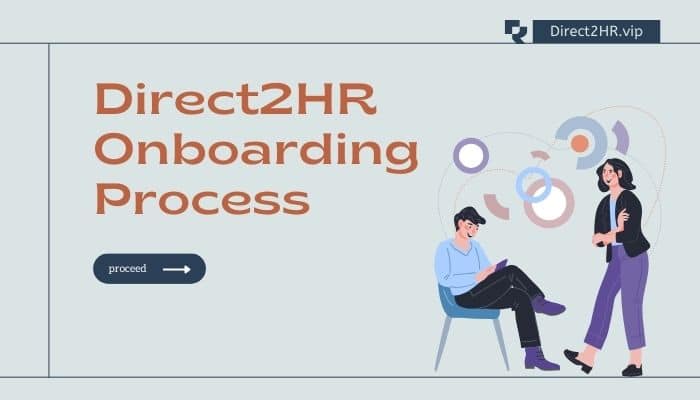In today’s digital workplace, managing schedules, requesting time off, and accessing employee information has become increasingly streamlined with the help of Human Resource (HR) information systems. Two such popular platforms are Direct2HR and mySchedule. However, with overlapping functionalities, choosing the right tool can be confusing. This article delves into a detailed comparison of Direct2HR and mySchedule, helping you understand their strengths, weaknesses, and suitability depending on your specific needs.

Understanding the Players
- Direct2HR: A comprehensive HR information system (HRIS) designed to manage various aspects of the employee lifecycle. It offers functionalities like payroll, benefits administration, applicant tracking, performance management, and employee self-service. While some versions might have a scheduling module, it’s not always the core focus.
- mySchedule: Often associated with Albertsons Companies (Safeway, Albertsons, etc.), mySchedule is a dedicated employee scheduling platform. Its primary function is to allow employees to view their work schedules, request time off, and potentially swap shifts with colleagues (depending on company policy).
Key Features Comparison
Here’s a breakdown of how Direct2HR and mySchedule fare in terms of various functionalities important for employee scheduling and self-service:
- Schedule Viewing:
- Direct2HR: This may offer basic schedule viewing functionality, allowing employees to see their upcoming shifts and potentially download them in printable formats.
- mySchedule: This is the core strength of mySchedule. It provides a clear and user-friendly interface for viewing weekly or bi-weekly schedules, with details like shift timings, breaks, and location (if applicable).
- Time Off Requests:
- Direct2HR: Often offers a robust time-off module where employees can submit various leave requests (vacation, sick leave, personal days) with detailed justifications and supporting documents (if required) for manager approval.
- mySchedule: While time-off requests might be possible on mySchedule, it may have limited functionality compared to a dedicated HRIS. Options for leave types and justification might be simpler.
- Shift Swapping:
- Direct2HR: Less likely to support shift swapping directly. However, some HRIS platforms might integrate with communication tools like Slack or Microsoft Teams, allowing employees to coordinate swaps outside the system.
- mySchedule: May offer functionalities for employees to propose shift swaps with colleagues, subject to manager approval. This helps with schedule flexibility and work-life balance.
- Integration with Payroll:
- Direct2HR: Many HRIS platforms seamlessly integrate with payroll systems, ensuring accurate calculations based on worked hours and approved leave requests.
- mySchedule: Generally not designed for payroll integration. It focuses solely on scheduling functionalities.
Additional Considerations
Beyond the core functionalities, here are some additional factors to consider when choosing between Direct2HR and mySchedule:
- Company Size and Needs: Larger companies with complex HR needs might benefit from a comprehensive HRIS like Direct2HR. Smaller businesses with simpler scheduling requirements might find mySchedule sufficient.
- Cost: Pricing models for HRIS platforms can vary significantly. Direct2HR might come at a higher cost due to its broader functionalities. mySchedule, likely offered by the employer at no additional cost to employees, might be a more cost-effective option.
- Customization: HRIS platforms like Direct2HR offer a higher degree of customization based on company policies and workflows. mySchedule might have limited customization options tailored to the specific needs of the employer (e.g., Albertsons Companies).
- Security: Both platforms should prioritize data security for employee information like schedules and leave requests. Ensure your company adheres to data privacy regulations.

Choosing the Right Tool
Ultimately, the best choice between Direct2HR and mySchedule depends on your specific needs. Here’s a quick guide:
- Choose Direct2HR if:
- Your company requires a comprehensive HRIS solution for various employee needs beyond scheduling.
- You need robust time-off management functionalities with detailed leave types and justifications.
- Payroll integration is essential for accurate pay calculations.
- Your company has a complex organizational structure and extensive customization needs for HR processes.
- Choose mySchedule if:
- Your company primarily needs a dedicated employee scheduling tool with a simple interface.
- Viewing weekly schedules and submitting basic time-off requests is your main concern.
- You value the ability to request shift swaps with colleagues (if offered by your company policy).
- Cost is a significant factor and your company already offers mySchedule as an employee benefit.
Conclusion
Direct2HR and mySchedule are both valuable tools for employee self-service and scheduling. By understanding their strengths, weaknesses, and suitability based on your specific needs and company culture, you can leverage these platforms to improve efficiency, communication, and overall employee satisfaction. Remember, the ideal choice depends on the complexity of your HR processes, budget constraints, and the desired level of functionality for employees and managers.